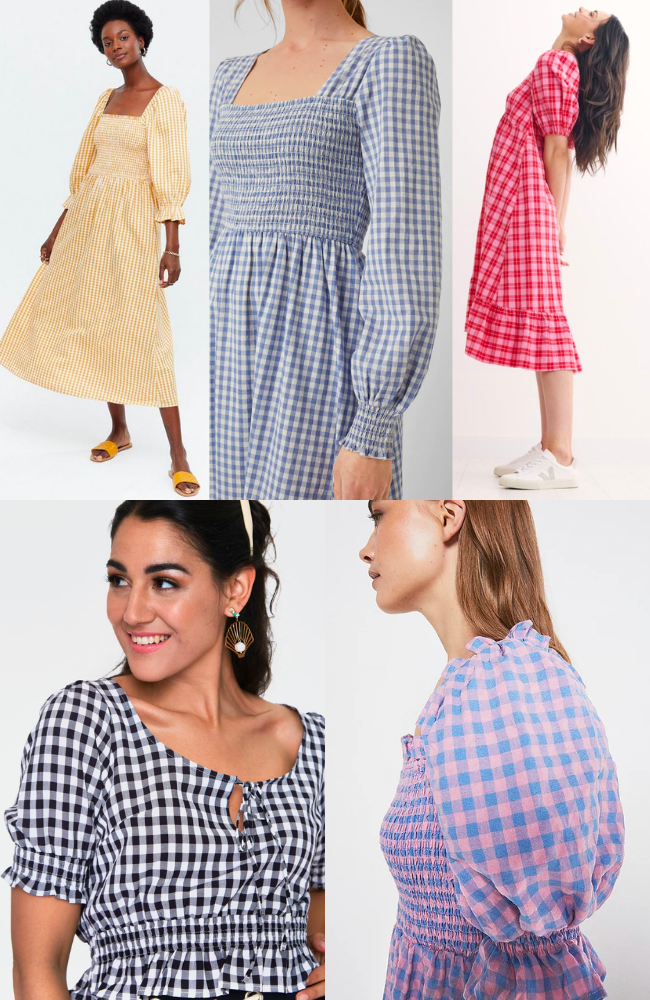- Making a toile
- Choosing your size
- Lengthening or shortening pattern pieces
- How to combine pattern sizes
Making a toile

Choosing your size

Ultra versatile, you can make it as a classic jacket that will never go out of style, or try the on-trend prairie collar for Ganni-esque vibes. Sonny can be made as a casual unlined jacket, but if you do want to line it, we have created a separate lining add-on PDF pattern for a polished inside finish.
Read on to find out more about Sonny...
One of the things we love the best about Sonny is how different it can look depending on which version you make and what fabric you use. You can go utility style with a classic pointed collar, or make a designer-style jacket with the on-trend frill prairie collar. Let's take a look at Sonny's details:
Both the Sonny jacket and lining are available in sizes UK 6-34 / US 2-30 / EUR 34-62. The full size range is included in each pattern. Sizes UK 6-16 and 18-34 are created and graded for a different set of proportions, so you will notice there is more shaping on the larger pattern sizes to account for a fuller bust.
The Sonny jacket pattern is available either printed or PDF, and the lining add-on is available as a PDF download only.
Order the Sonny jacket printed sewing pattern and we'll send you a beautiful package in the post, with a full-colour instruction booklet. Made in the UK, our patterns are printed on durable paper which you can use again and again without it tearing or scrunching up.
The Sonny lining add-on pattern and Sonny jacket are available as an instant PDF download. You'll get an email straight after purchase with a PDF to either print and assemble at home on A4 or Letter size paper or send to a copyshop or pattern printer to print full scale on A0. Need further help? Read our guide to using PDFs.
Whichever format you choose, the pattern will be accompanied by our award-winning instructions with step-by-step colour photos to guide you through the project. The pattern pieces themselves are clearly labelled so you can see which seam is which and how they go together.
Sonny works best with medium- to heavy-weight fabrics that hold their shape. Think denim, twill, corduroy, jacquard or wool.
If you're making the prairie collar version with collar frill, make sure the fabric is light enough to gather - ideally you will be gathering up two layers of frill fabric at once, but if the fabric is struggling you could sew gather stitches on each layer separately. Another option is to use a different fabric for the collar frill, allowing you to experiment with different textures and patterns.
If you're lining your jacket using the Sonny add-on pattern, use slippery lining fabrics such as cupro (Bemberg), viscose (rayon), acetate or polyester lining. Alternatively, you can line the sleeves in lining fabric and use a cotton lawn, viscose or teddy/sherpa fleece for the bodice lining.
We know some makers are planning to make Sonny as a blouse instead of a jacket - we are excited to see it! If you want to try this, use something like a cotton lawn or even a more drapey viscose, lengthen the pattern, and add an elastic channel to the ends of the sleeves.
We have labelled Sonny as suitable for "confident beginners". While making a jacket may seem daunting, it's actually just a series of relatively simple steps. The trickiest bit is sewing buttonholes, but we have lots of tips for that! You will be supported all the way with our clear instructions, and if there are any techniques you aren't sure about, you'll find lots of extra help on a dedicated space on the blog.
If you're yet to line any outerwear on your sewing journey, the Sonny lining add-on is the perfect place to start. We did a lot of research and development to hone our instructions and you'll be amazed at the final result!

*****
Models: Averil & Sophie Prat
Photographer: Jane Looker
MUAH: Simone @ The Bridal Stylists
Samples: Sewn by Deborah Wilkins
Blue denim - Minerva
Corduroy - Lullabee Fabrics
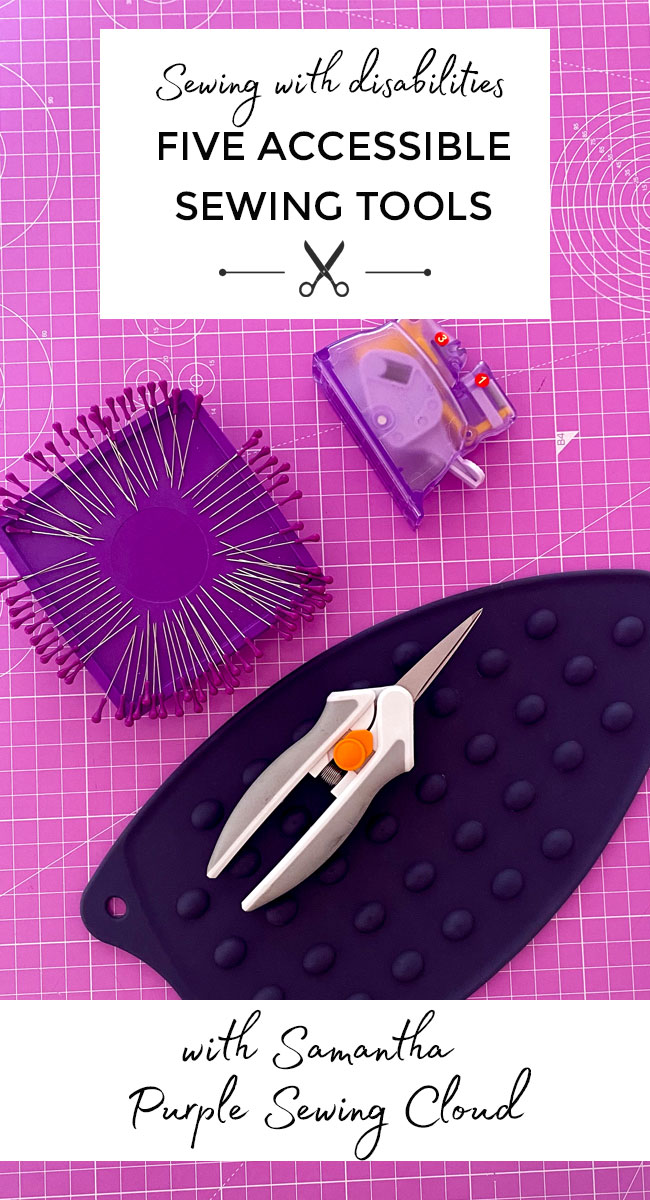





A full tummy adjustment adds width and length to the stomach area on a pair of shorts or trousers (or pants if you're one of our North American friends). It's a handy adjustment to do if you need a little bit more room across the tummy, but the rest of the trousers fit well and feel comfortable.
But how do you know if you need a full tummy adjustment? If you often get drag lines across the stomach, a tight front crotch or if the side seams are pulled forward in line with the tummy area, this can indicate that you could benefit from a bit more room across the front. Even a small full tummy adjustment can make all the difference to how your shorts and trousers fit, and is a great adjustment to keep up your sleeve, or should we say down your leg (sorry).
We've made a video which explains how to do a full tummy adjustment from start to finish. If you prefer to learn via diagrams and text, then keep on reading.
For this tutorial you’ll need your front leg pattern piece, a pen or pencil, a ruler, some scissors, some tape, and a bit of paper.
If you're sewing up an Esti co-ord or two this summer, you're in the right place for a healthy dose of fabric and high-street inspiration for your makes!
Ideal for all your favourite spring/summer fabrics, Esti is designed for light- to medium-weight woven fabrics. Try linen or chambray for a more structured silhouette, or viscose (rayon) or Tencel (lyocell) for a drapier look.
First, let's have a peek at the lovely Esti samples...

Esti is a simple to sew and incredibly versatile top-and-trouser or top-and-shorts co-ord that you can wear all year round!
Since we're all different shapes, we sometimes need to make adjustments to sewing patterns to get a fit that we're happy with. Here, I'm going to talk you through the most common fitting adjustments you might want to consider making to your Esti Co-ord.
In this post we're going to cover:
Our Esti top-and-trouser co-ord sewing pattern makes an instant outfit, staple separates for layering, or even a chic faux jumpsuit. It's an easy sewing project that's great for beginners, and a speedy, satisfying make for more experienced stitchers.
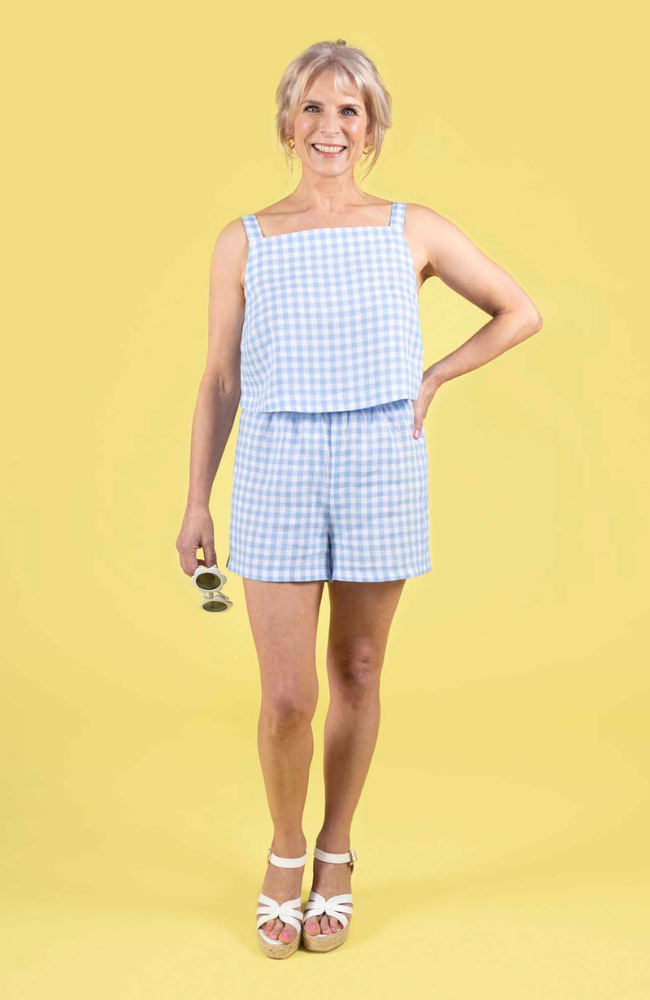

Esti is a two-piece set comprising a strappy top and trousers or shorts, which you can make to be worn together or separately.
The top has:
The bottoms have:


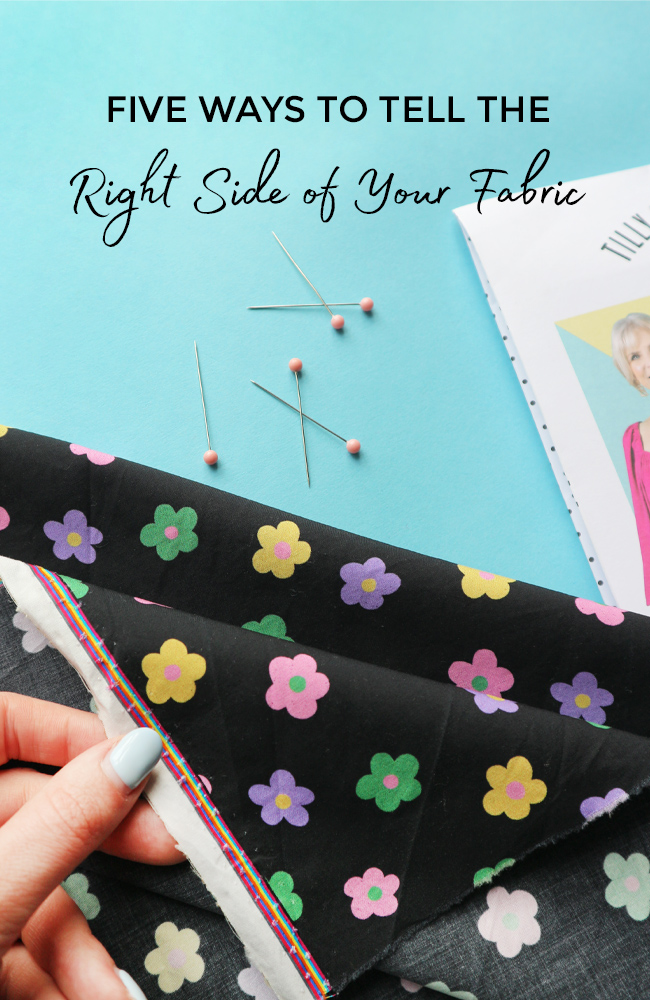
Knowing which side of your fabric is the “right side” is an essential part of any sewing project.
The “right side” of the fabric that is meant to be visible from the outside of your garment for everyone to see, while the “wrong side” is the side that will be hidden on the inside.
Sewing patterns will usually tell you to sew with right sides together, so the seams end up hidden on the inside of the garment. Exceptions include when you’re sewing French seams, in which case you start with the wrong sides together, or when you’re attaching a piece such as a patch pocket to a garment, when you’ll place the wrong side against the right side.
So it’s important to know which side is which! Some fabrics can be a lot easier to tell which is the right side than others. Others can be more tricky, but with these five simple tips, you should be able to identify yours in no time.
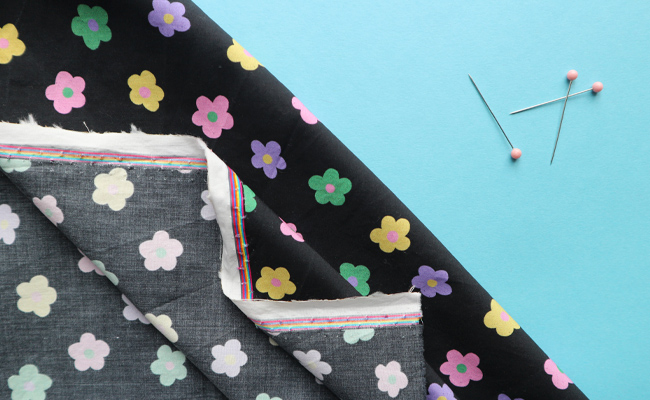
The first and most obvious way to check which side is which is to look for any visual differences between the two sides. If your fabric has a print on only one side, then that side is most likely the right side. If your fabric has a print on both sides, the right side may appear brighter than the wrong side.
In the case of solid fabrics, you can hold the fabric up to a light source to check for any differences in tone or sheen between the two sides. Choose which one you prefer and make sure to keep your fabric the same when up when cutting your fabric to keep it consistent.

Have you ever tried sewing with a scallop edge stitch? If you're looking to add a charming, decorative touch to your sewing projects, it’s a beautiful option. Sewing a scallop stitch on your sewing machine is not only simple, but also a fun and creative way to add unique detailing to garments, accessories, and home decor items.


The scallop stitch is a decorative stitch on your sewing machine which creates a wavy effect. You can use it on its own to sew one or more pretty rows of stitching or, as I will be demonstrating here, along the edge of a hem, cutting away the fabric below to leave little scallops along the edge.
You will need a sewing machine that has the scallop stitch as an option, so check your manual to see if includes it. I’m using the Janome DKS100 Special Edition.
Depending on your fabric, you may also need some kind of stabiliser, such as spray starch, interfacing or embroidery stabiliser – I’ll talk about that a bit more below.
In this tutorial, I'm sewing a scallop edge stitch on the hems of the shoulder ruffles on our Marnie blouse sewing pattern. You could also try this on the Lyra shirt dress collar, the hem of a Mabel dress or the flounce sleeve hems of an Indigo smock.
You can also sew scallops in the middle of a piece, like I have here on the front yoke of the Marnie blouse, in which case there’s no need to trim off the excess fabric.

Cotton is a popular fabric choice among sewists and crafters, and for good reason! With its breathability and wide availability in a huge range of prints and styles, it's no surprise that cotton has had a bit of a renaissance in recent years.
In particular, finer cottons like lawn, voile, Swiss dot and seersucker have become increasingly popular. They are relatively easy to cut, sew and press, yet lightweight, so provide a lovely balance of structure and drape.
Cotton is one of the easiest fabrics to work with, but still has its quirks. But with the following tips, you'll be well on your way to sewing some gorgeous cotton clothes…


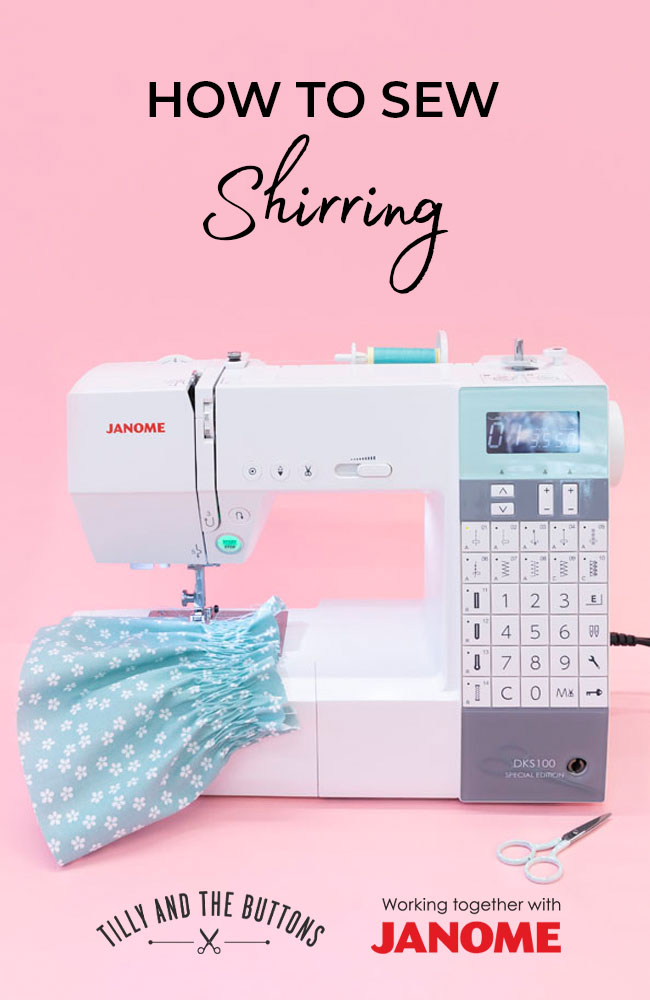
Fancy trying your hand at shirring? This lovely sewing technique creates a pretty gathered texture on garments, with the bonus of an adjustable elasticated fit.
Shirred styles are all the rage on the high street at the moment, and creating this effect is not only fun and fulfilling, but it’s easier than you may think. You just need to know a few simple tips and tricks – I’ve outlined the method in this post, accompanied by a free video tutorial, all brought to you thanks to the support of Janome UK.
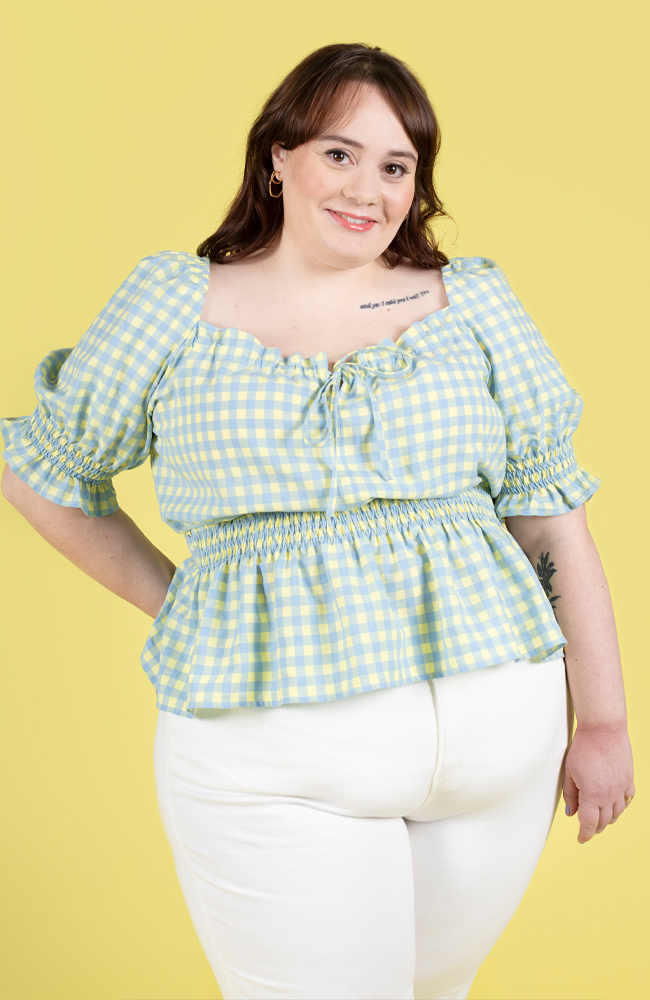
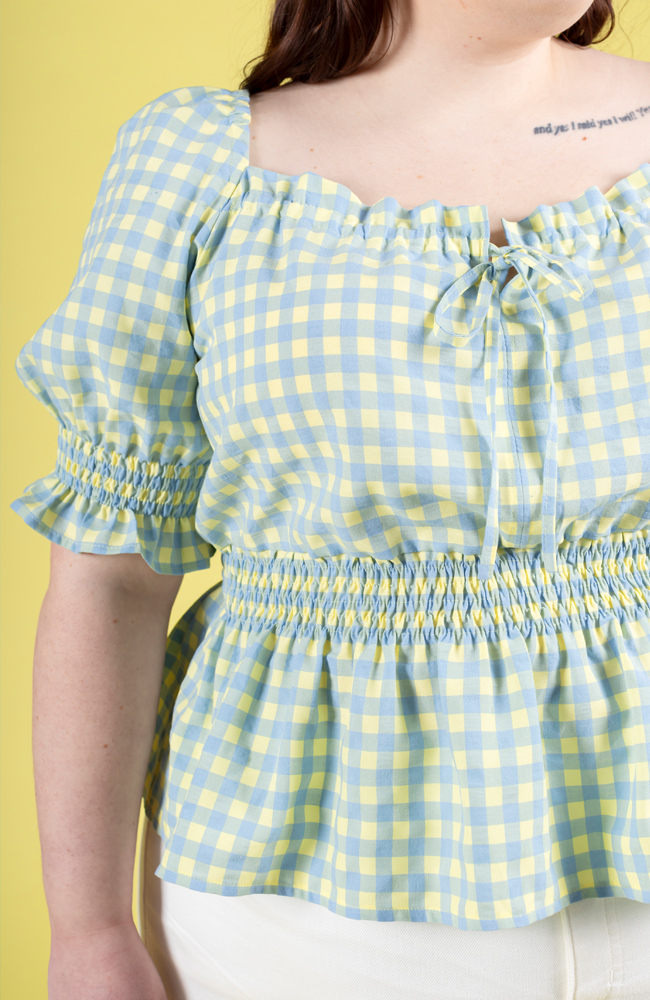
I’m demonstrating on our Mabel blouse and dress sewing pattern, which has a shirred waistline and sleeve cuffs. You can use the same technique for sewing shirring on other patterns too.
Mabel is a dream sewing pattern. Not only does it look sensational (OK, we might be a little biased), it's relatively easy to fit too. The blousey bodice, elasticated shirred waist, and wide skirt offer comfort and ease in the bust, waist and hip areas, so don't require close fitting. The areas that might need tweaking, depending on your body, are the elastic length in the shoulders and neckline, and we'll explain how you can do this below.
In this post we're going to cover:
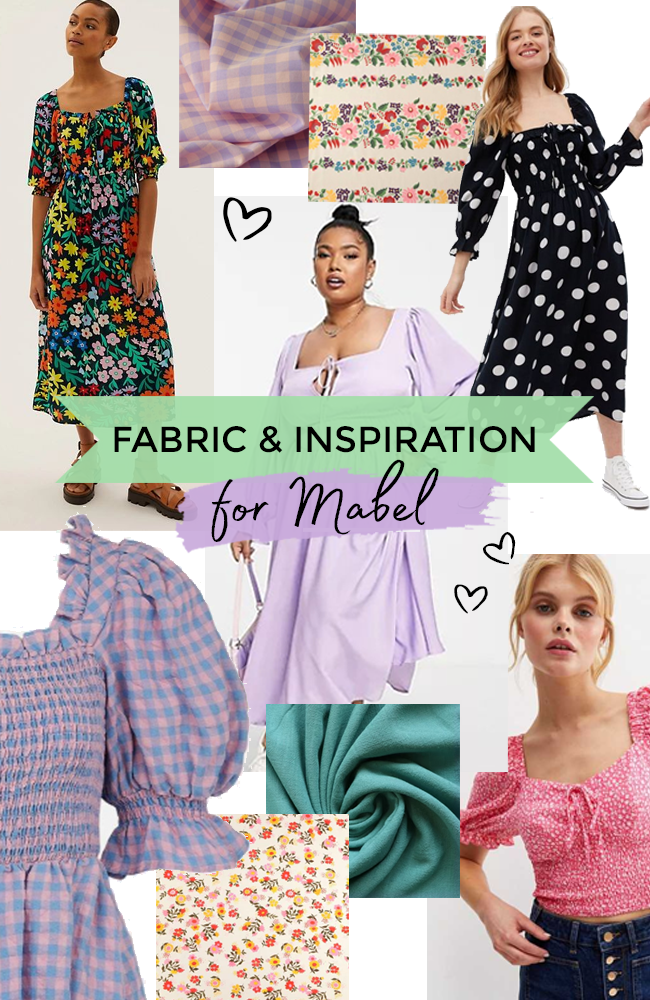
In the mood for Mabel? You're in the right place! It's time for your dose of Mabel blouse and dress sewing inspiration.
The Mabel sewing pattern is ideal for many fabrics you may well already have in your stash. We recommend lightweight woven fabrics that gather easily. Cotton-based materials such as lawn, poplin, voile and seersucker will give a casual daytime vibe, or you could go with something like a viscose (rayon) or crêpe for a softer silhouette and silkier look for the office or a party.
Gingham & Checks

Fabric: Yarn Dyed Gingham Cotton - Blue & Yellow
If you're new to shirring, make your life easier with a fabric with directional lines like ginghams and checks. We love this combo so much, we made our Mabel blouse sample out of gingham too!
